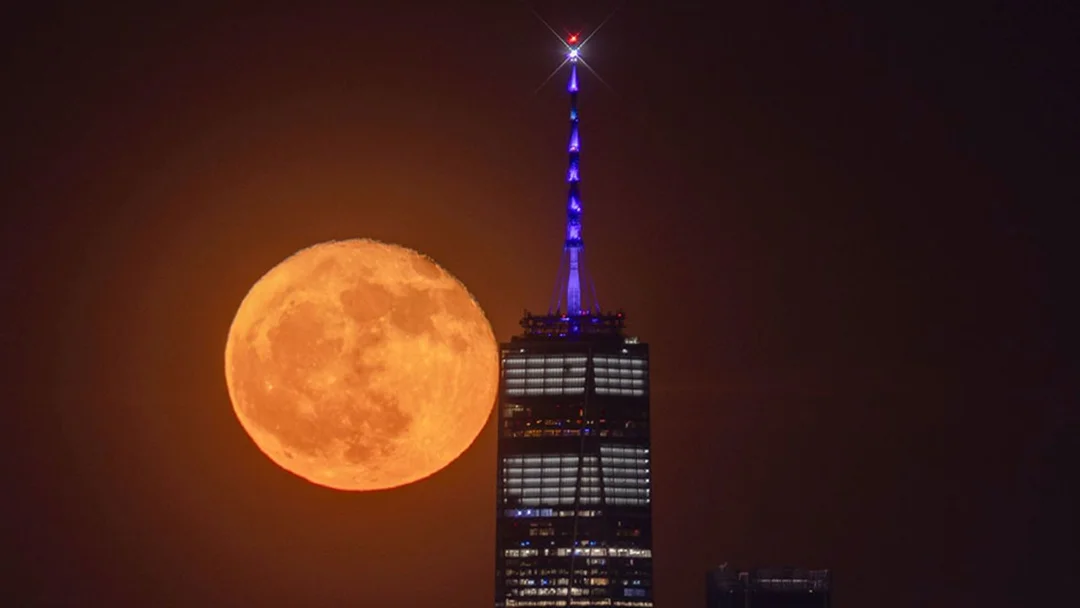
Flower Moon Shines Bright: Astronaut Views, Micromoon Details, and Astrophotography Tips
The Flower Moon, a name given to May's full moon due to the abundant blooming of wildflowers in spring, recently graced our skies, offering stunning views from both Earth and space. This year's spectacle included a unique perspective from NASA astronaut Nichole Ayers aboard the International Space Station (ISS), along with details on the micromoon phenomenon and tips for capturing its beauty.
Astronaut's Eye View: Nichole Ayers, part of the SpaceX Crew-10 mission, shared breathtaking images of the Flower Moon from the ISS. Her photos showcased the moon's relationship with Earth, capturing the planet's blue expanse dappled with clouds and the moon's dark maria streaking across its surface. "I'm still in awe of our view of the world and beyond," she wrote on X, highlighting her artistic eye through various lenses to capture the celestial beauty.

Micromoon Explained: This year's Flower Moon coincided with a micromoon, a phenomenon where the full moon appears slightly smaller due to its farthest point from Earth, approximately 251,000 miles away. Despite the slightly reduced size, the Flower Moon offered a stunning visual for skywatchers.
Visual Appeal and Cultural Significance: The Flower Moon isn't just a visual spectacle; it also carries cultural significance. As the Royal Museums Greenwich explained, many cultures recognize May's full moon as the Flower Moon, celebrating the season's abundant blooms. Other names include the Hare Moon, Corn Planting Moon, and Milk Moon.
Astrophotography Opportunities: For those looking to capture the Flower Moon's beauty, the event presented a tantalizing target for astrophotographers. The moonrise offered the perfect opportunity to get creative, combining the lunar subject with the surrounding landscape. Consider exploring resources on lunar photography and upgrading your gear to ensure you're ready for the night sky. The longer, redder wavelengths of light, cause by the sunlight's path through the Earth's atmosphere, can also give the moon a rusty hue as it rises.

The Moon Illusion: Interestingly, the moon may appear larger than usual when near the horizon due to the moon illusion. Despite NASA acknowledging that there isn't a single scientific explanation for the illusion, it is understood that the human brain perceives sizes of objects differently at varying distances.
The Flower Moon showcased the beauty of our celestial neighbor, offering perspectives from both Earth and space. From astronaut insights to micromoon details and astrophotography tips, the event highlighted the fascinating intersection of science, nature, and human curiosity. What were your thoughts on this year's Flower Moon? Share your observations and photos in the comments below!
Related issues news
What is a flower moon?
Every full moon in May is called a flower moon, which came from the name given by the Algonquin Native American tribe.. The moniker is inspired by the budding plants blooming across North America. u201cFlowers spring forth in abundance this month,u201d the Old Farmer's Almanac notes.
What is the May moon called?
May's full moon is a spring spectacular called the Flower Moon. It's a little smaller and dimmer than you might expect - known as a micromoon. It will be at its brightest at 17:56 BST on Monday. And you may be in luck as it looks like there could be good viewing conditions.
What time is flower moon?
The full flower moon will reach peak illumination at 12:56 p.m. on May 12, 2025, according to the Old Farmer's Almanac.
What time is the May 12 full moon?
According to NASA, the moon will be around 4 lakh km away from Earth as against its average distance of around 2.4 lakh km. The next full moon occurs Mon. May 12 at 12:56 p.m. EST, but it will look full the night before and after.